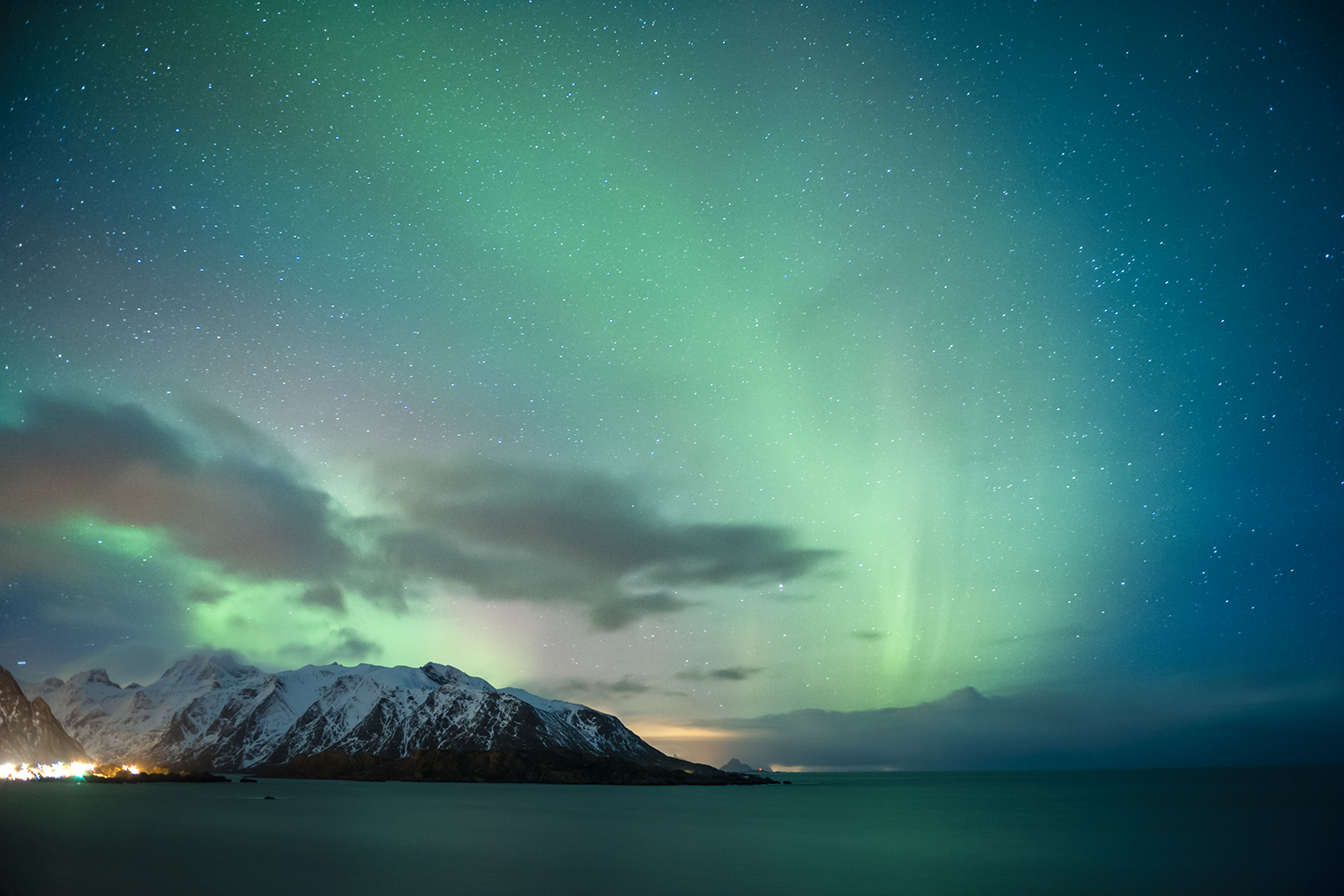
It’s not so long ago that the people of Lofoten believed the northern lights to be the visible form of angry gods, eager to scoop unsuspecting souls into the sky to roam across the darkness for all eternity. Even today, to prevent an untimely disappearance, local superstition dictates that one mustn’t whistle when the aurora comes to town.
But death takes many unexpected forms in this remote string of islands in northern Norway, and if humans aren’t safe on dry land, they’re certainly no better off on the rolling seas. Legend tells of the draugr, a headless fisherman slathered in seaweed who sets out on stormy nights to ride the waves in a broken boat. The first a mortal seafarer will know of his presence is the sound of his screams carried in on the wind. They are soon dragged to the bottom of the ocean, doomed never to return to shore.
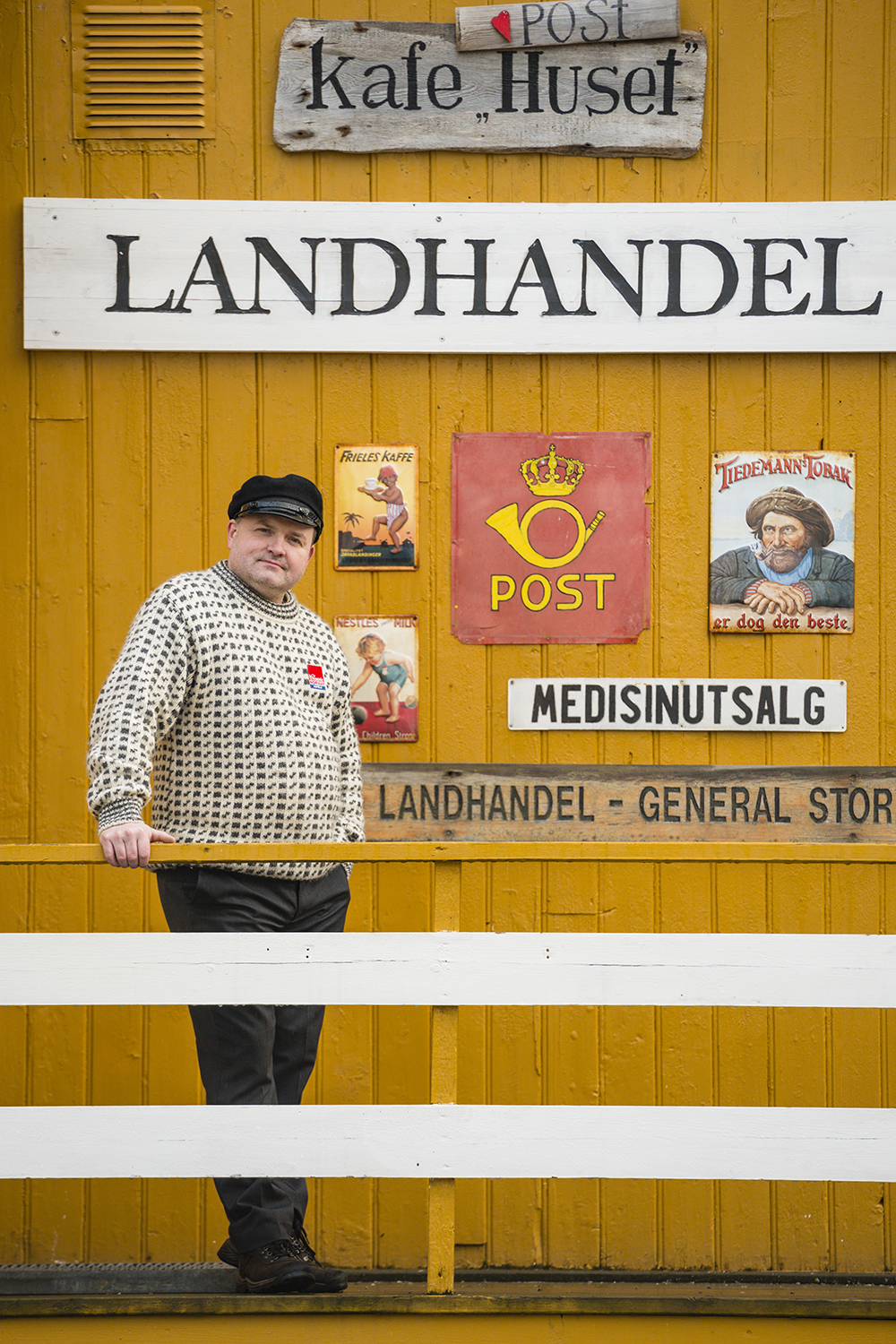
The life of a fisherman is quite hard enough without the meddlings of a mythical sea creature. Guide Ragnar Palsson, a jaunty fellow in a thick Nordic knit and black cap, leads the way round Nusfjord, Lofoten’s oldest fishing village and now a living museum, with a restored general store, blacksmith’s and boat-repair workshop.
Striding across icy paths that have others flailing wildly for balance, he unlocks the door of a ‘rorbu’ – a grass-roofed wooden hut once used to house fishermen during the winter fishing season. Inside, the turquoise water of the Norwegian Sea glimmers through the gaps in the rough floorboards, and fishing nets and heavy ropes hang on the walls.
‘In the nineteenth century, the fishermen wore woollen clothes,’ he says, slapping his hands together to keep warm. ‘If they fell overboard, they would just sink down. There was no mercy.’ He stares out of the window at the rising swell. ‘But that is the life here. The ocean decides if you live or not.’
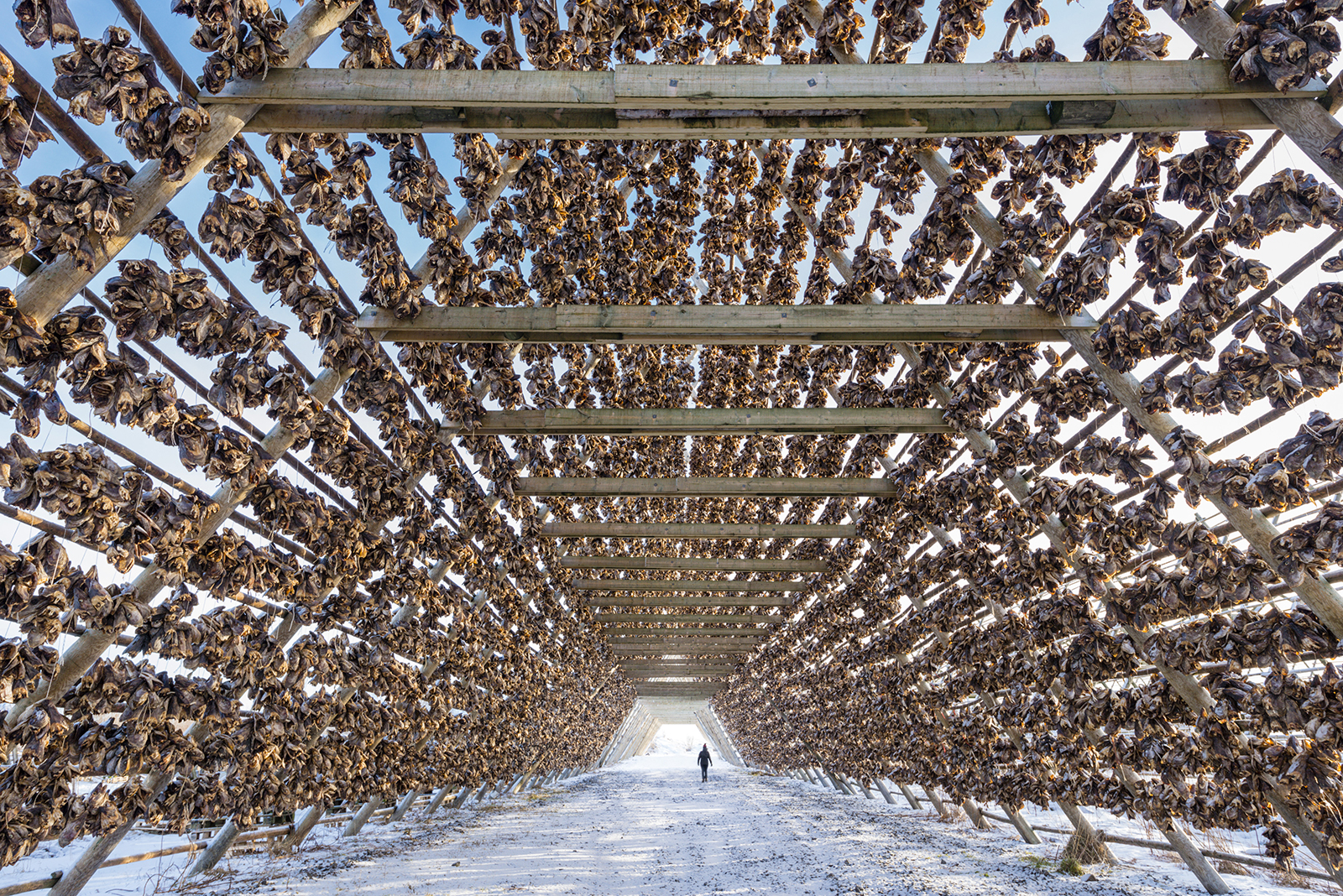
The siren that made men risk all was one that made Norway what it is today: cod. As stockfish, air-dried on racks to the consistency of bark and retaining its nutrients for half a decade, it was the food that allowed the Vikings to travel farther and longer than any of their contemporaries; more than a millennium on, Norway’s polar explorers had discovered no improvement on it, and dried cod was first on their expedition packing lists. For centuries, cod was the country’s biggest export.
‘One hundred years ago, 80 to 90 per cent of Norwegian income was from tax on stockfish,’ says Hartvig Sverdrup, in blue overalls and wellies, ambling cheerfully about the slippery floor of his fish factory in Reine, a small coastal town ringed by a horseshoe of mountains. His ancestors (all also called Hartvig) established the factory five generations ago, and its business remains much the same.
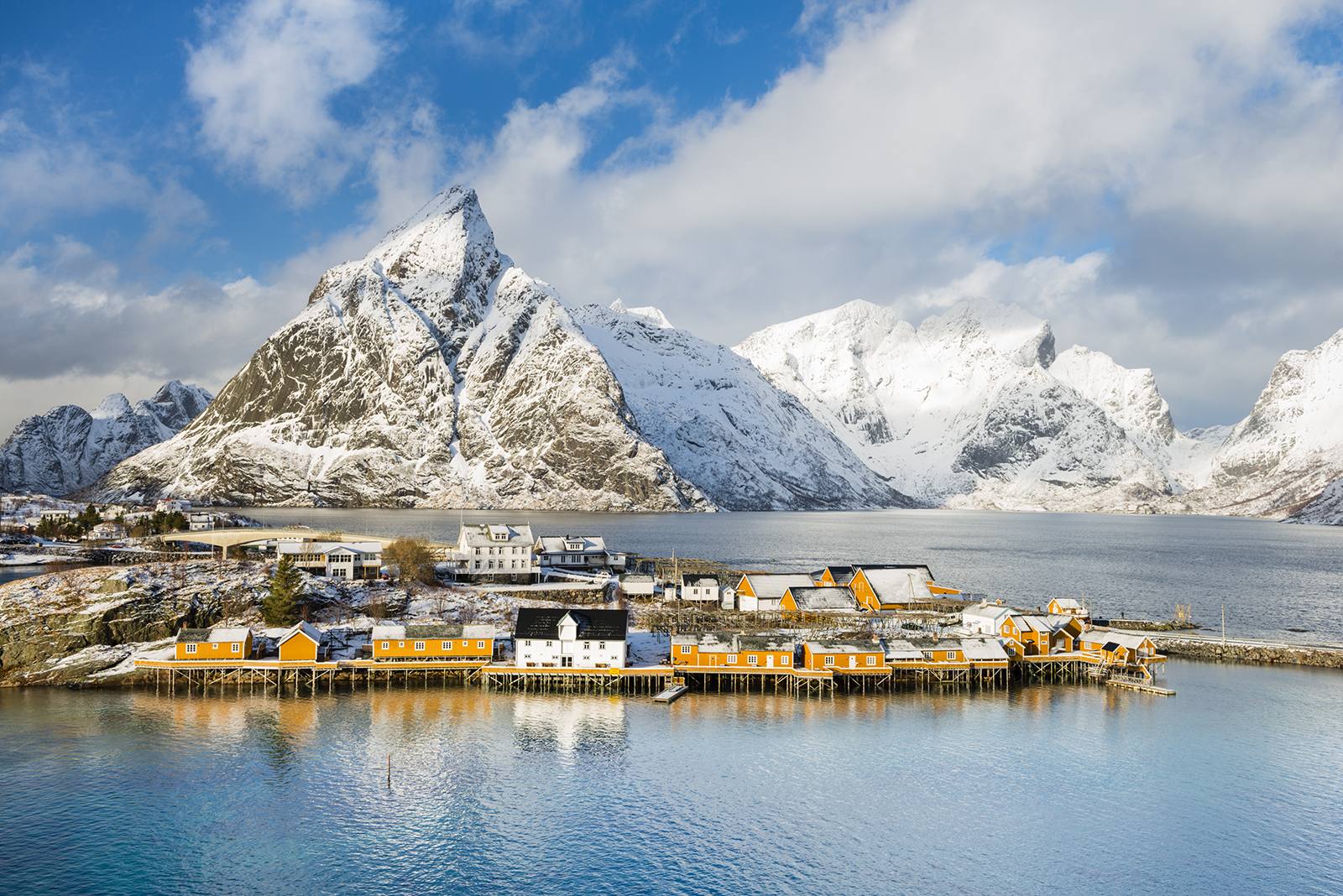
Great crates of fish are delivered straight into the building from boats on the quayside, gutted and sorted, and packed off around the world – to the chip shops of Britain, the restaurants of Italy, and the markets of Nigeria. He takes a bit of dried fish from a plastic bucket and whacks it with an axe to soften it; the taste can best be described as inoffensive, and milder than the smell. ‘In Norway now, we really only eat fresh fish, but the Vikings took with them stockfish. It wasn’t always that they would rape and kill. They traded too.’
The islands’ interest in fish has always gone far beyond what might be deemed strictly necessary for commerce: Lofoten is crazy for cod. Every winter, schools of the fish travel 500 miles south from the Barents Sea to the archipelago’s relatively warm waters to spawn en masse. After the long journey, their meat is lean, and highly prized. ‘We look forward to the cod arriving,’ says Olga Wiesniewska, a Polish PhD student completing her fisheries studies in the historic village of Å. ‘My friends are fishermen and all summer they are waiting, waiting, waiting for the fish. Now I don’t see them – they are out 24 hours a day.’
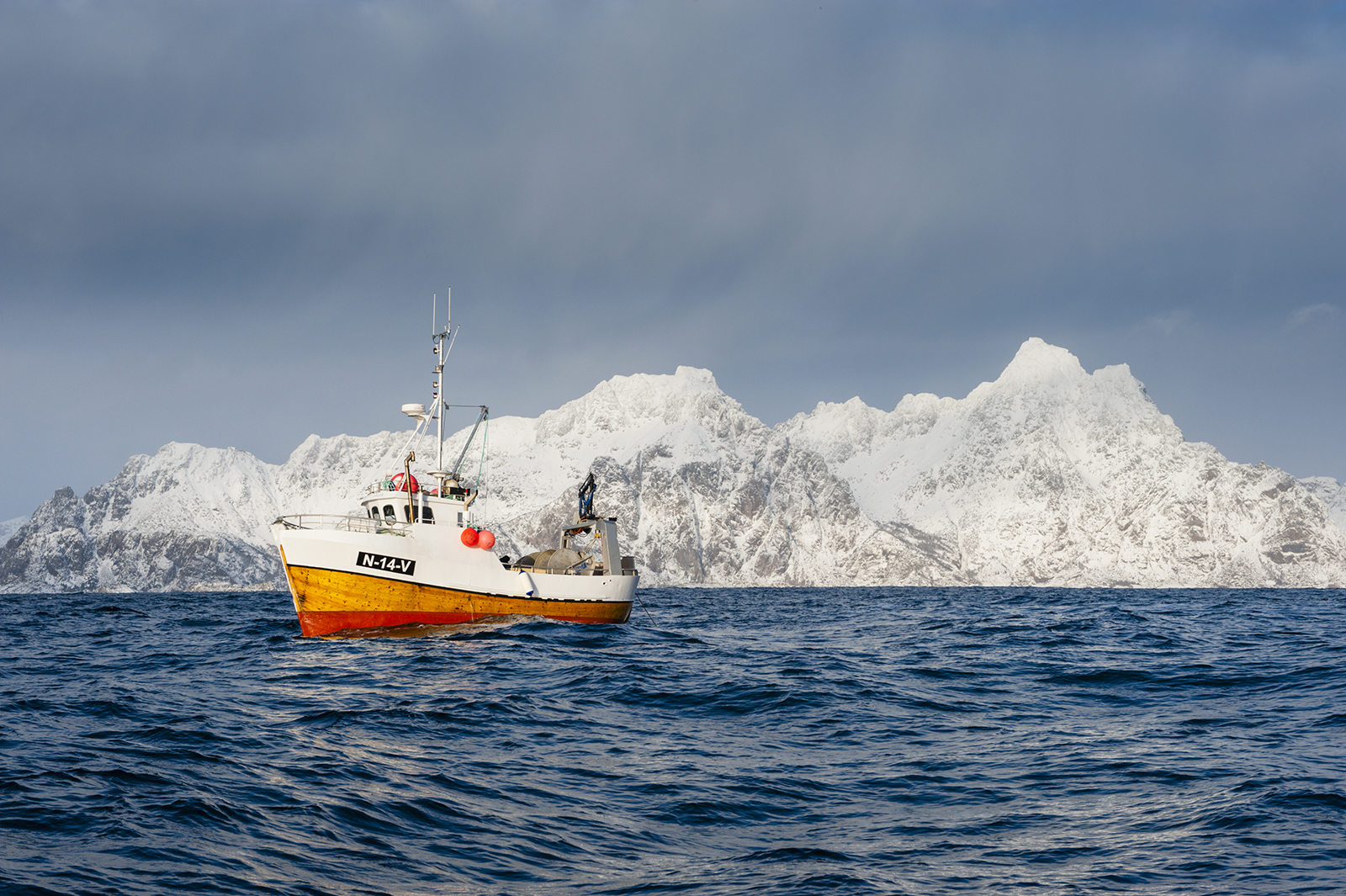
It’s early in the season and even now the sea is speckled with boats – lurching over the waves followed by a trail of seagulls in the quest for a magnificent haul of the greeny-grey fish. Commercial trawlers bring in 13 tonnes on a good day, but for most Norwegians, it’s enough to head out with a line and a six-pack of beer and pluck out one or two for supper. Already, Lofoten has seen its first ‘coffee cod’ – the first 30kg catch of the year, its vanquisher awarded a kilogramme of coffee by the Lofotposten newspaper.
Fishing is not an occupation generally rich in rewards for those who leave their fate to the waves each day, as Å stands in testament. The grand yellow manor houses built for its former fishery owners sit high and dry up on the harbour, with the rickety red rorbuer on spindly stilts over the chill water. ‘The fishermen were poor and could only pay rent to the landlord in fish,’ says Olga. ‘They were always wet, they were always cold. But at least the rorbuer were a step up – before, they would sleep under their boats.’
In one of Å’s rorbuer, recreated to resemble its 19th-century original, lies a wooden chest. From among the woollen underclothes and gloves within, Olga pulls out a will, neatly filled out and ready for dispatch should circumstances require. ‘So many of them went to sea and never came back.’
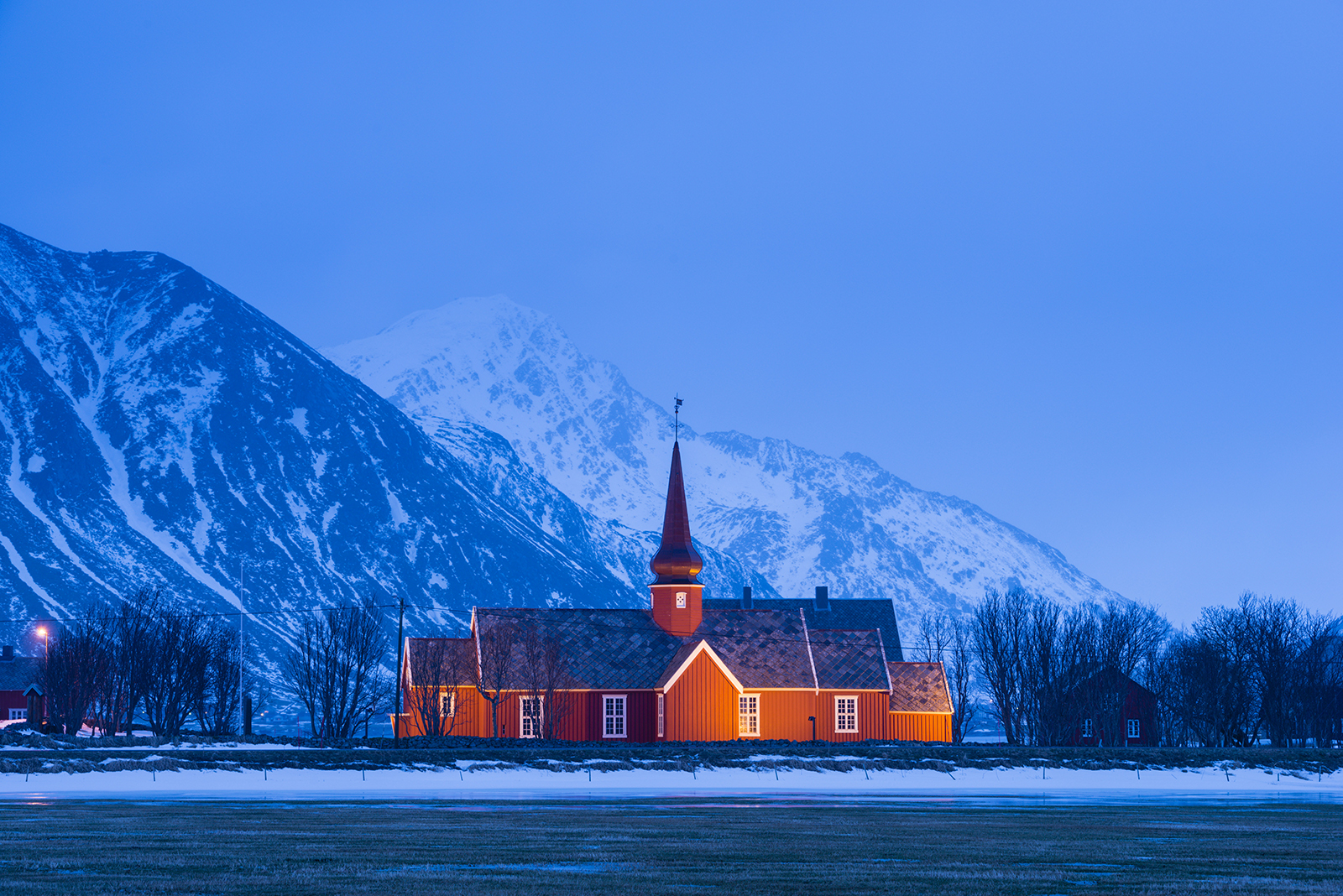
It is little surprise that the fishermen of Lofoten have their own church – this is an environment that makes people religious. Floodlit Flakstad kirke casts a soft glow in the deep blue of the Arctic night. In the vestibule hangs a framed sheet of paper, the names of 147 men diligently recorded in neat handwriting upon it between 1800 and 1950: each of them a fisherman who went out and never returned.
‘Some were found on shore, but many were lost,’ says Trond Gran, Flakstad’s vicar, his eyes travelling over the list. ‘I still meet women in their eighties who lost their husbands, their sons. They look out of the windows at the sea every night, waiting. It is the same story in every fishing village in Lofoten.’
The simple wooden church itself resembles a ship, its ceiling like an upturned hull. Huge trunks of pine, brought in from Russia in the 18th century, form the walls, moss and grass now growing between their cracks. Gliding above the pews is a model of a fishing boat, its sails proudly billowing.
‘Here, the church is a ship that takes you from the beginning of life to the end of life,’ says Trond. ‘Nature rules this place, and Flakstad is so small compared to the mountains all around, but you come in and you are warm and you can rest.’ He pulls on his coat, ready to head home, past the graves of the few fishermen buried outside under the snow, the gentle whoosh of the surf breaking on the beach beyond. ‘There is a strength to the people who live here – when the blizzard comes, when everything is ruined, they just change gear and get going again.’
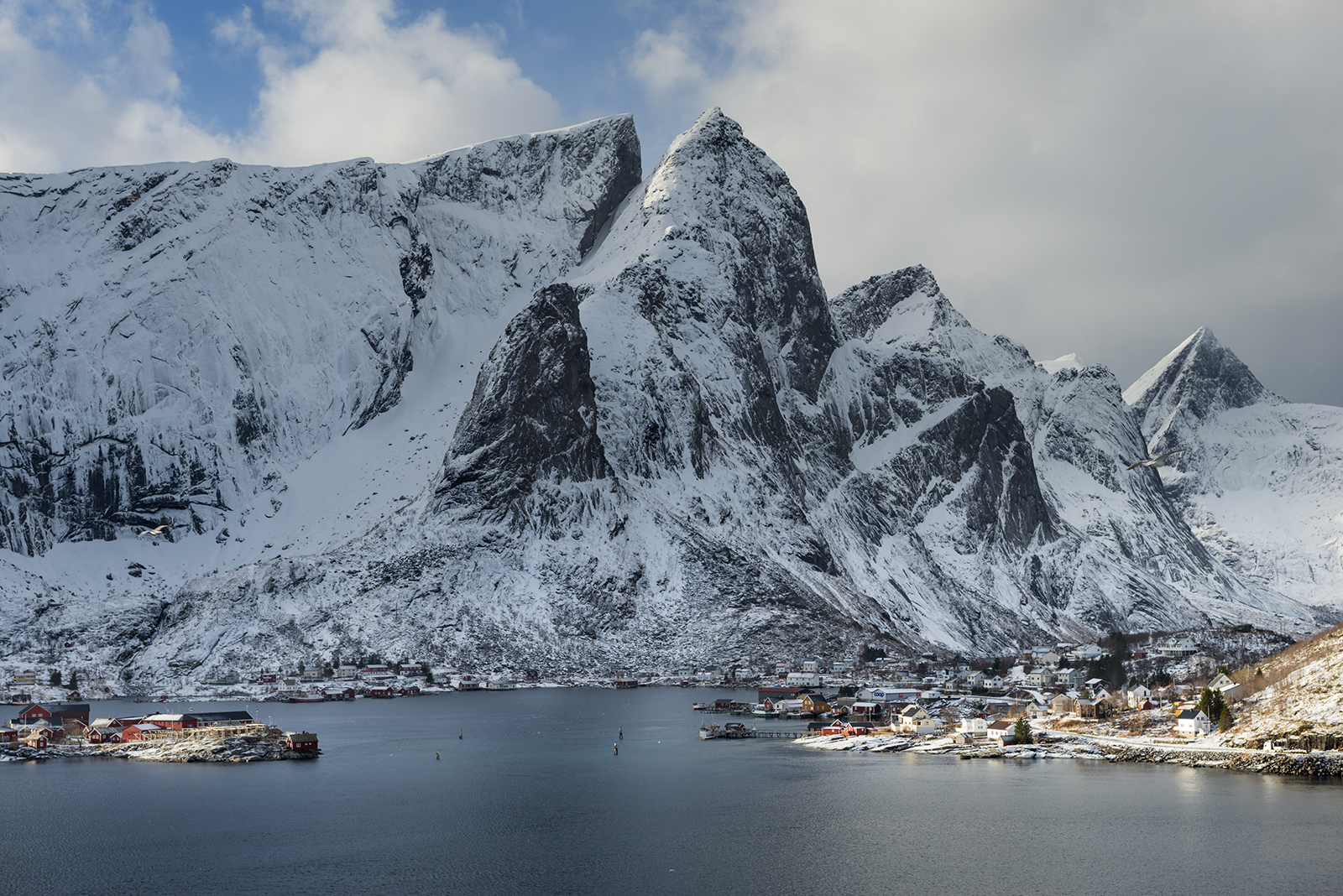
When Flakstad's parishioners came to church in its earliest days, the islands were accessible only by boat. Roads now skirt the archipelago. The mountains of a child’s drawing loom out of the mist around every bend: pointy, symmetrical and covered in snow. Lorries hurtle along, whisking the day’s catch to the mainland and beyond, alongside a sea that foams against the rocky shore, black and ferocious.
Every few miles, the bright houses of a fishing village appear. On their outskirts, colossal drying racks jut into the skies, macabre wooden cathedrals dripping with decapitated cod heads. Crows wheel in the wind, floating down to peck at their eyes. The racks will fill and fill over winter, and here the heads – and the bodies to which they were once attached – will stay, curing in the salty sea air until summer. The stench grips the nose, and does not let go.
In Henningsvær, a rumble-tumble village of red and yellow houses, Cecilie Haaland sits at her potter’s wheel, scouring a jug with a wooden chisel, and laughs. ‘In Lofoten, we say we don’t smell the fish, we smell money.’ An Oslovian, Cecilie planned to stay in northern Norway for a year and then head back south. That was 20 years ago. She now runs the Engelskmannsbrygga artists’ studios in an old cod-liver-oil factory right on the waterfront.
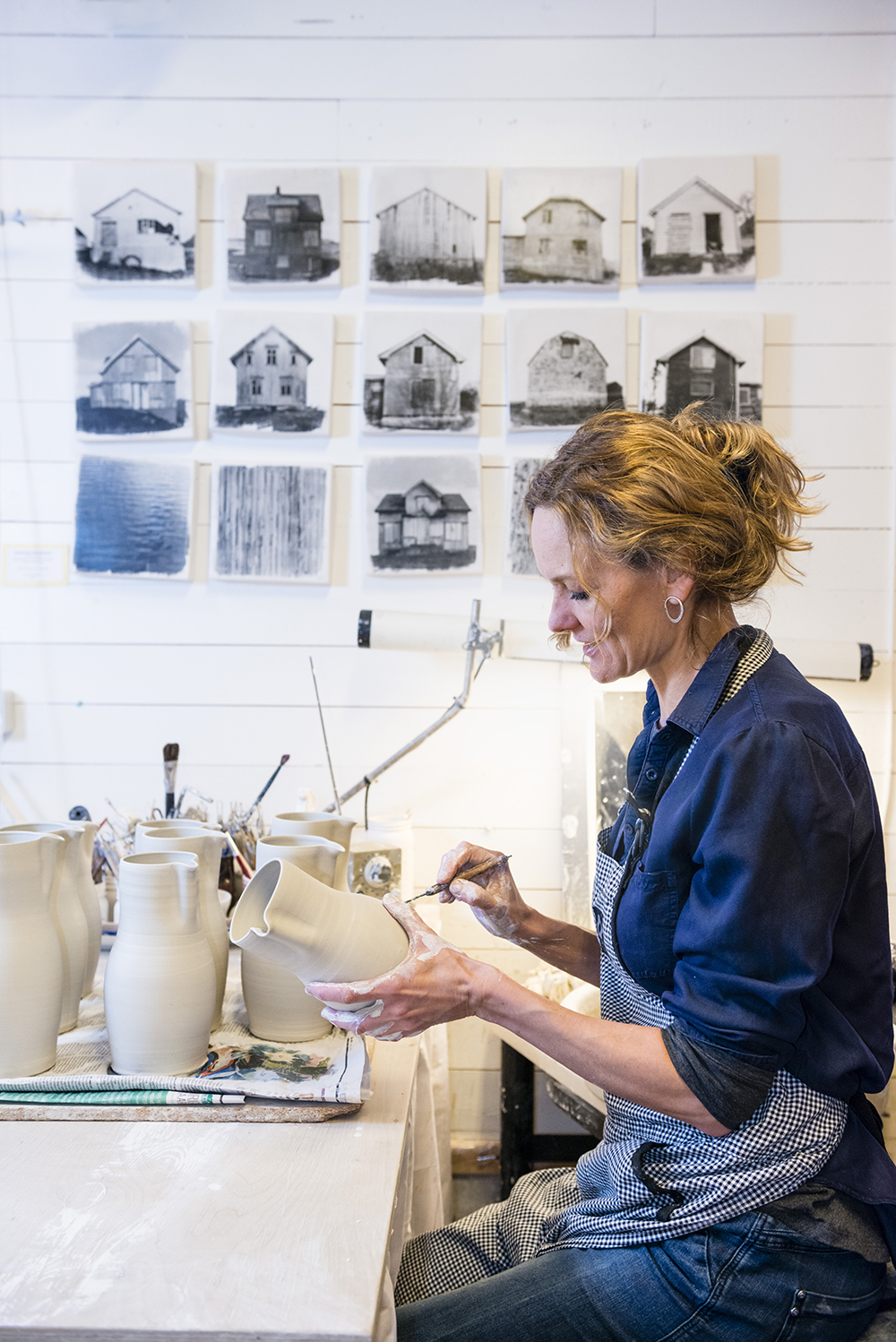
From her workshop, the shelves a mishmash of pots and jars and the smell of wet clay hanging in the air, she can look up from her latest project and watch the fishing boats come and go. ‘In the winter season, it’s crazy. There are so many boats. And so many fish! You can’t see the seafloor, there are so many fish.’ Sign that Cecilie is a true Lofotener lies in the neat arrangement of one small collection in the gallery’s shop: simple black-and-white images of fish tails, each belonging to a fish she caught personally, transferred on to delicate porcelain cups.
A few doors down from the Engelmannsbrygga, Johan Petrini shows that hers is not the only art inspired by the sea in these parts. Like Cecilie, Johan – a Swede – had no plans to stay in Lofoten, but fell in love with the islands and never went home. Now the head chef at Henningsvær’s Fiskekrogen restaurant, Johan wears his heart on his sleeve: inked on his arm are a cod, a lighthouse, an anchor, and a knife and fork.
His menu is based entirely on what the fishermen bring to the wharf each day. ‘Everyone is so excited to eat the first Arctic cod here every winter,’ he says, ‘they’ll make a 30-mile round trip for a bowl of fish soup.’ He puts the finishing touches to a platter of cod, cod’s tongues, salmon sashimi and halibut, the fish arranged on the plate as if on the seabed. ‘In winter, it is quiet in Lofoten. In these dark times, we have time to create, to experiment.’ He glances up as a boat chugs past and into harbour: ‘Well, it’s quieter for me at least, but not at sea. Now the horizon is full of dots – the fishermen out at work.’
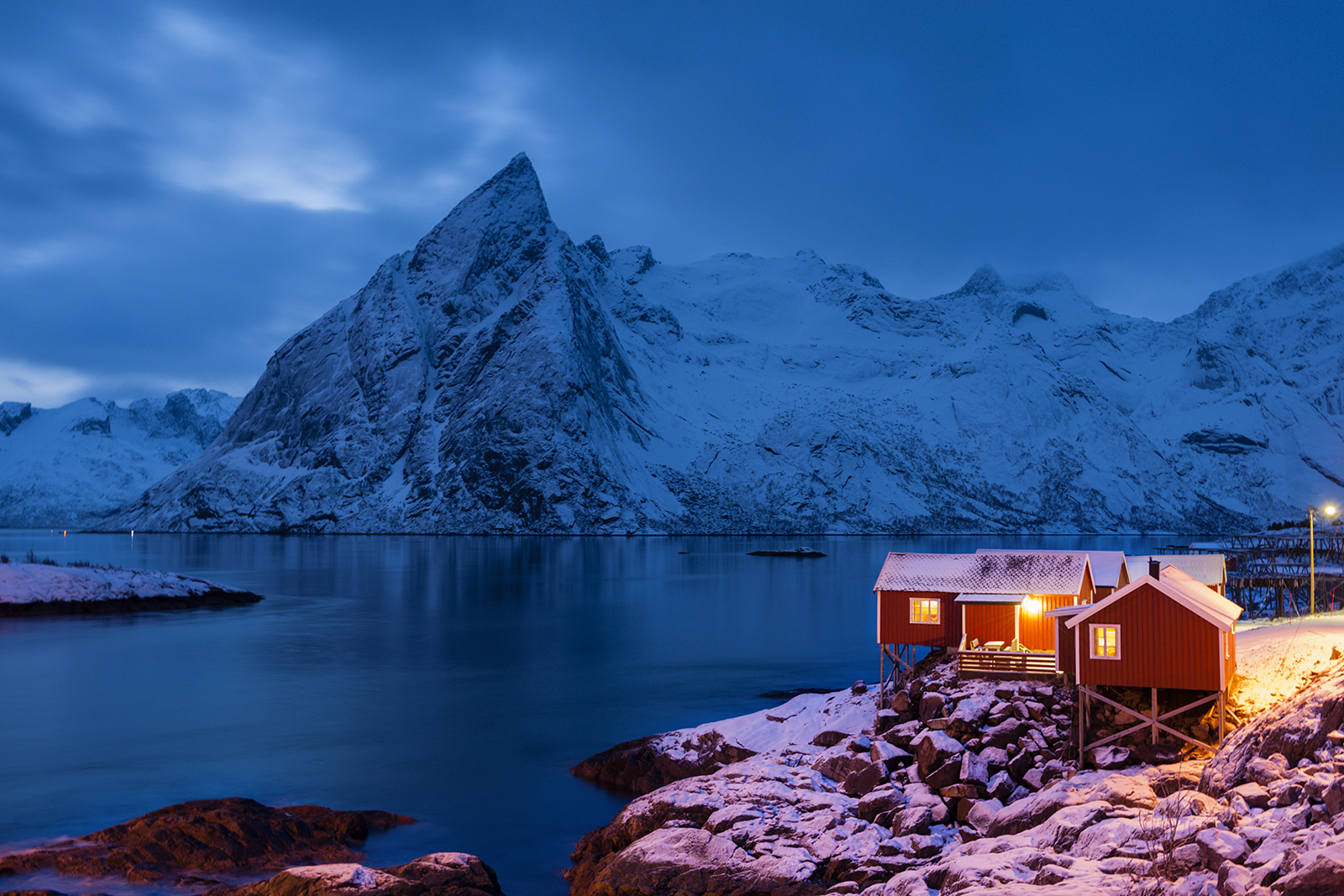
It’s certainly quiet on the icy streets of Henningsvær tonight. The snow is swirling in the sky, and a storm is coming in. Soon, all will be on their way, back to their homes and back to the rorbuer that have become guest houses. In the darkness, the wind screams, rattling the windows and banging the doors against their hinges. But at least all souls are safe inside, warm and dry, and far from the icy grip of the draugr waiting beneath the waves.